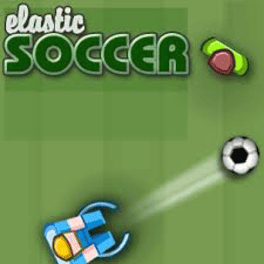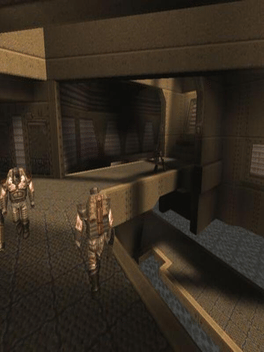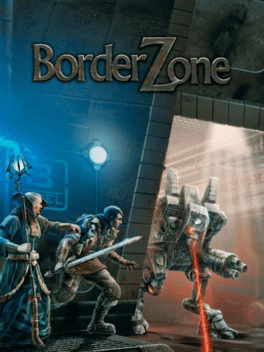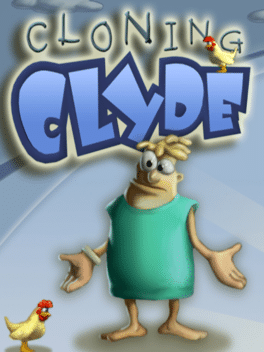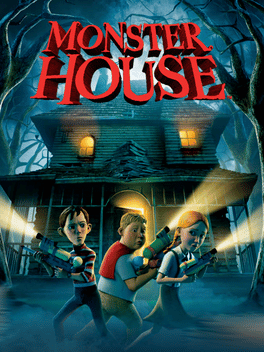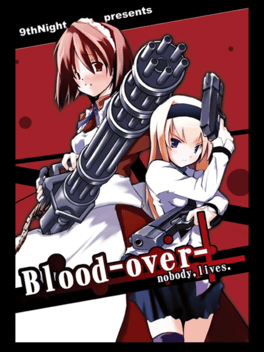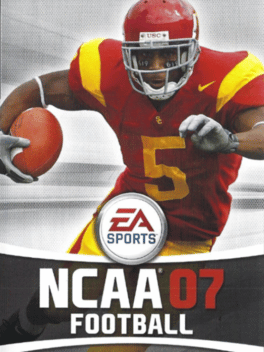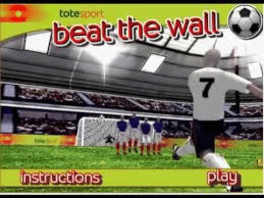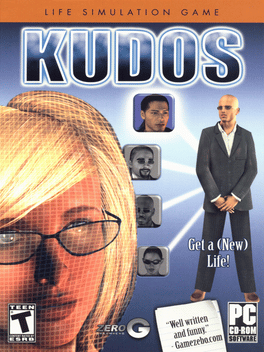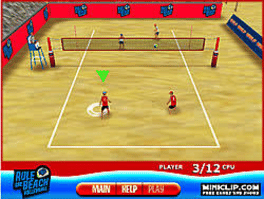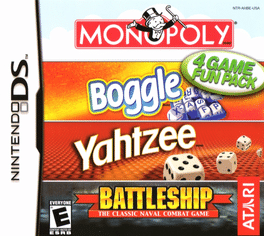New Games - Page 10256
-
Elastic Soccer
2006
Elastic Soccer
2006
Elastic Soccer is a classic soccer-themed flash game with a twist. In this game, the players cannot move except for the goal keeper. The ball on the hand, gets attracted to the nearest player. Players must then shoot the ball like a rubber band and try to get a good angle for a shot. Take control of the goal keeper by pressing and holding down the Shift Key. The goal of the game is to outscore your opponent before the match is over. -
The Occupied Base
2006
The Occupied Base
2006
Professional remake of Quake's original deathmatch map DM3. Highly detailed and many expanded areas for single player, yet still maintaining the original layout in deathmatch mode. Map source is included. -
Oniria
2006
Oniria
2006
Oniria is a single-level PWAD for Doom II, authored by Aluqah and designed for ZDoom. The new color scheme (PLAYPAL and COLORMAP), which plays a significant role in the level, was created by Jon Dowland. In Oniria, you are having a nightmare from which you cannot awaken. You find yourself in a bizarre world where everything is black-and-white with the exception of the color red. The only thing you can do is to explore the world with the hope that the nightmare would eventually come to an end. -
Borderzone
2006
Borderzone
2006
BorderZone is a role-playing action with a complex non-linear storyline in which the player can choose a profession to his liking (mage, thief or soldier), learn the needed skills and spells, create a team of up to 5 dare-devils and leave for a trip full of danger and unexpected discoveries in the world of Terra filled with various creatures. -
Cloning Clyde
2006
Cloning Clyde
2006
star 7.5Cloning Clyde is a 3D side-scrolling adventure. As Clyde, or one of his clones, work your way through the levels of the nefarious Dupliclone, Inc. building. It houses bizarre simulated environments created specifically to accommodate their unconventional cloning experiments. Have fun utilizing the many clones running amok inside Dupliclone, as you try to free yourself…or should we say yourselves. Be careful of the traps set by the sinister corporation, and watch out for mutant clones! Get even more inventive and you can use the cloning technology to combine the Clyde clones with some of your co-inhabitants to make mutant Chicken-Clydes, Frog-Clydes, Ape-Clydes and more. Many of the mutant Clydes have special abilities that can help you to escape from the evil Dupliclone, Inc. -
Monster House
2006
Monster House
2006
Oh no! Old man Nebbercracker's house is eating anything and anyone who gets near it, and Halloween is almost here! So grab your Water Blaster, gather up your courage, and get ready to explore the Monster House to find out its secrets. Monster House is an old-school shoot 'em up based on Columbia Pictures' animated movie of the same name. With the help of your touch screen controlled water gun, you explore the house room by room, fighting off waves of enemies (assorted household objects) coming from every direction. You also pick up various power-ups along the way. You can play as each of the three characters from the film - DJ, Chowder, and Jenny. -
Virtual Villagers: A New Home
2006
Care for and nurture a tribe of little people by teaching them the basics of survival. They need to become farmers, builders, scientists, parents and make decisions about unpredictable 'island events'! Guide their day-to-day lives and help them explore and restore their new home. As your village grows and prospers, your villagers become curious about their mysterious new island home and the secrets it holds. -
Blood-over-
2006
Blood-over-
2006
While fighting demons during an outbreak of monsters and supernatural forces, Shou, a demon hunter who wields the power the absorb demon's souls, confronts a shinigami who overpowered Shou and stolen her soul. Aided by house maid, the Gatling gun-wielding Akari, they must track down the shinigami to reclaim Shou's human soul before her demonic blood lust consumes her. -
Miami Vice: The Game
2006
-
Virtual Villagers: A New Home
2006
star 6.5Care for and nurture a tribe of little people by teaching them the basics of survival. They need to become farmers, builders, scientists, parents and make decisions about unpredictable 'island events'! Guide their day-to-day lives and help them explore and restore their new home. As your village grows and prospers, your villagers become curious about their mysterious new island home and the secrets it holds. -
World War II Combat: Iwo Jima
2006
World War II Combat: Iwo Jima is a budget-priced first-person shooter developed by Direct Action Games and published by Groove Games. Like its predecessor, World War II Combat: Road to Berlin, it received extremely negative reviews from reviewers and users alike. It suffered from many of the same problems of the first game. -
WarPath
2006
WarPath
2006
WarPath is a first-person shooter video game developed by Digital Extremes. The game was originally being developed as a sequel to Pariah, but since Pariah was a commercial flop, WarPath continued development as a whole new game. However, the similarities between the gameplay of both games are very apparent. -
NCAA Football 07
2006
NCAA Football 07
2006
star 8.3NCAA Football 07 is the successor to NCAA Football 06 in the NCAA Football series. The product features former USC player Reggie Bush on the cover. -
Monster House
2006
Monster House
2006
star 5.3Oh no! Old man Nebbercracker's house is eating anything and anyone who gets near it, and Halloween is almost here! So grab your Water Blaster, gather up your courage, and get ready to explore the Monster House to find out its secrets. -
Beat the Wall
2006
-
Kudos
2006
Kudos
2006
star 7Kudos is a life sim letting you explore the life of a 20 year old with a dead end job and no education to speak of. It has the gameplay of a flash life sim, and is generaly well developed and addictive. -
Rule The Beach Volleyball
2006
Rule the Beach is a 3D sports simulation game that immerses players in the fast-paced and vibrant world of beach volleyball. Combining realistic visuals with intuitive controls, this game challenges players to master the art of serving, spiking, and volleying while competing in scenic beach settings. Its dynamic gameplay, enhanced by responsive physics, makes for a fun and engaging experience. -
Mario's Journey
2006
-
Make the World a Better Place
2006
Help Old Man Rutherford as he kicks his last earthly possession (his computer) as far away from himself as possible in the hopes that it will make a lasting impression on mankind. -
Hasbro Compilation
2006
Hasbro Compilation
2006
Monopoly/Boggle/Yahtzee/Battleship is a collection of the hit board games that so many enjoyed as kids. Try your finance and negotiation skills in Monopoly, see how good you are with words in Boggle, roll the dice and hit the high numbers in Yahtzee and use your critical thinking to sink your friend's Battleship. State-of-the-art engine and physics create stunning visuals and effects Blood-curdling music and sound effects enhance the experience Play four of your all-time favourites anytime, anywhere Wireless multiplayer mode--challenge up to 4 friends Touch-screen controls - play word games as fast as you can think! "Hot seat" mode--share games with up to 4 people on a single DS

